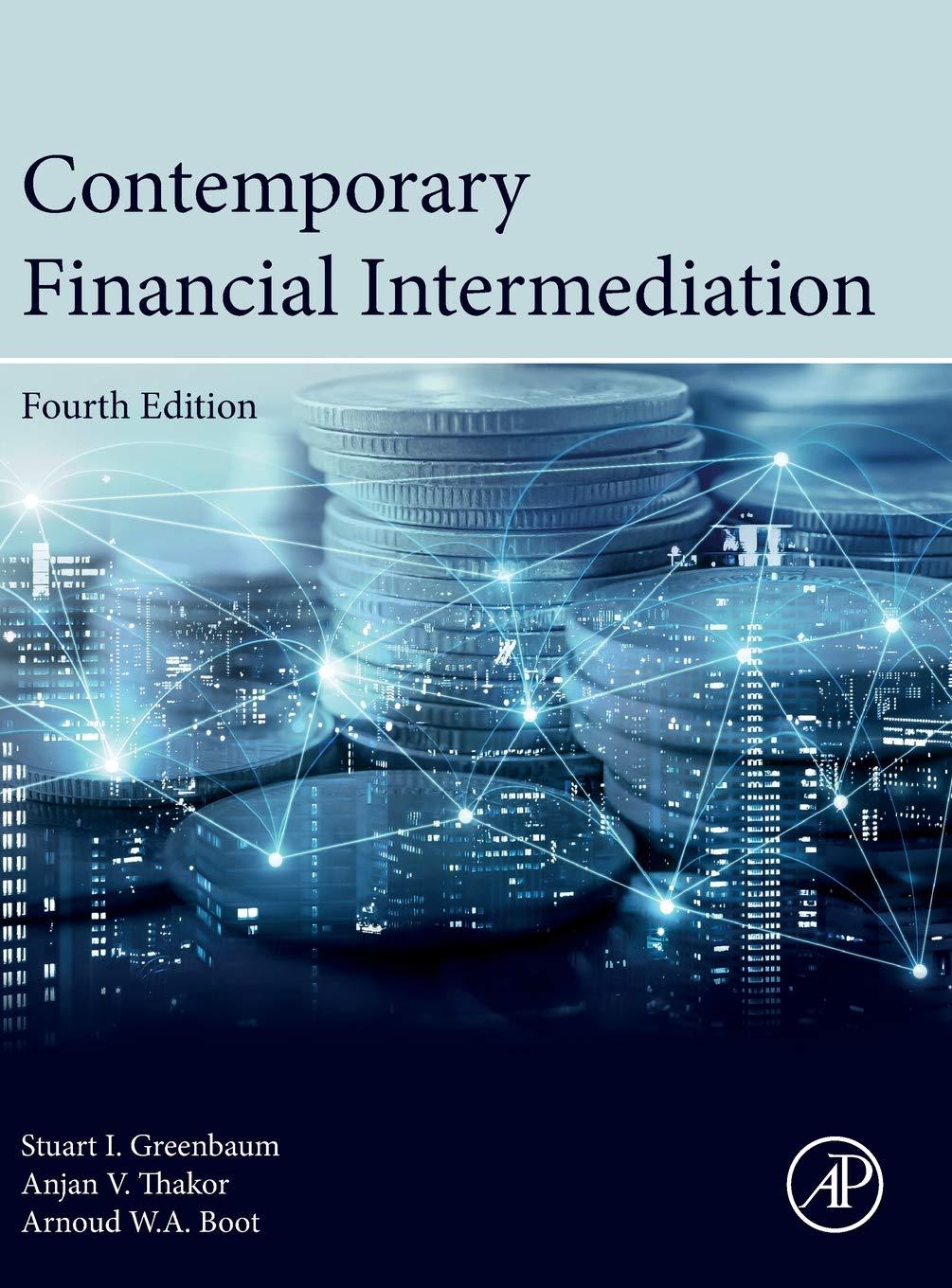Consider a bank that receives a $1 deposit from each of 200 different depositors at t =
Question:
Consider a bank that receives a $1 deposit from each of 200 different depositors at t = 0. It invests $25 of shareholders’ equity in the bank and lends $200, keeping $25 as cash reserves. Out of the 200 depositors, there are 75 depositors (called type-D1 depositors) who are capable of monitoring the bank’s management; the remaining depositors (called type-D2 depositors) have kept their money in the bank simply for transactions and safekeeping. The cost of monitoring the bank for an individual type-D1 depositor is $0.03 per period. The bank has two mutually exclusive investment opportunities. Project (or loan) A pays $300 with probability 0.6 and zero with probability 0.4 at t = 1. Project B pays $250 with probability 0.8 and $220 with probability 0.2 at t = 1. If the bank chooses one of these two projects, the probability that the bank will actually end up with that project is 0.7.
With probability 0.3, the bank will have inadvertently chosen the other project. Thus, we assume that the bank may make errors in project choice. By monitoring the bank, a type-D1 depositor can discover the bank’s true project choice at some point in time intermediate between t = 0 and t = 1, say at t = 1/2. These depositors can, if they desire, force liquidation of the bank by withdrawing their deposits at t = 1/2. Note that the bank’s loans/projects mature at t = 1. If they are liquidated at t = 1/2, they are worth only $70 to the bank. Under the terms of the deposit contract, the bank promises to pay 15% interest (conditional on the bank having the financial capacity to do so) if deposit withdrawal occurs at t = 1, and no interest if withdrawal occurs before that. Thus, a depositor is entitled to $1.15 if she withdraws at t = 1, and $1 if she withdraws at t = 1/2. The risk-free discount rate is zero and all agents are risk neutral.
All the type-D2 depositors plan to withdraw at t = 1, but each is subject to a random liquidity-motivated desire to withdraw at t = 1/2. To simplify, we will assume that even though no one knows in advance which (type-D2) depositors will wish to withdraw at t = 1/2, the fraction of those who will wish to withdraw is known to be 25/125. That is,
25 type-D2 depositors will wish to withdraw at t = 1/2. Assume that the bank’s managers make decisions in the best interests of their shareholders. Compute the equilibrium strategies for the bank and its depositors.
Step by Step Answer:

Contemporary Financial Intermediation
ISBN: 9780124052086
4th Edition
Authors: Stuart I. Greenbaum, Anjan V. Thakor, Arnoud Boot





